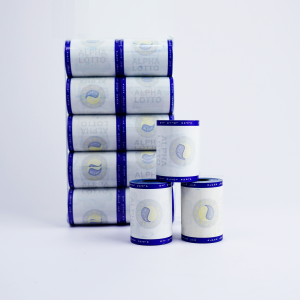Thermal paper is a widely used paper coated with chemicals that changes color when heated. It is commonly used for receipts, tickets, labels, and other applications that require fast printing without the need for ink or toner. While thermal paper offers convenience and efficiency, its environmental impact has raised concerns due to the chemicals used in its production and the challenges associated with its disposal.
One of the major environmental concerns associated with thermal paper is the use of bisphenol A (BPA) in the coating. BPA is a chemical linked to a variety of health problems, and its presence in thermal paper raises concerns about potential exposure to humans and the environment. When thermal paper is used in receipts and other products, BPA can transfer to skin during handling and contaminate recycling streams if not handled properly.
In addition to BPA, the production of thermal paper involves the use of other chemicals and materials that can have a negative impact on the environment. The manufacturing process can result in the release of harmful substances into the air and water, causing pollution and potential harm to ecosystems. Additionally, there are challenges in handling thermal paper due to the presence of chemicals in the coating, which makes recycling or composting difficult.
If thermal paper is not disposed of properly, it can end up in landfills, where chemicals in the coating can leach into soil and water, posing risks to the environment and potentially affecting wildlife and human health. Additionally, recycling of thermal paper is complicated by the presence of BPA and other chemicals, making it less likely to be recycled than other types of paper.
To address the environmental impact of thermal paper, there are several steps you can take. One way to do this is to reduce the use of thermal paper by choosing electronic receipts and digital documents whenever possible. This helps minimize the need for thermal paper and reduce the associated environmental impact. Additionally, efforts could be made to develop alternative coatings for thermal paper that do not contain harmful chemicals, making them safer for both human use and the environment.
Additionally, proper disposal and recycling of thermal paper is critical to mitigating its impact on the environment. Businesses and consumers can take steps to ensure thermal paper is disposed of in a way that minimizes its potential harm to the environment. This may involve separating thermal paper from other waste streams and working with recycling facilities that have the capacity to handle thermal paper and its associated chemicals.
In summary, while thermal paper offers convenience and practicality in a variety of applications, its impact on the environment cannot be ignored. The use of chemicals such as BPA in its production and the challenges associated with its disposal have raised concerns about its potential harm to the environment. The environmental impact of thermal paper can be mitigated by reducing its use, developing safer alternatives, and implementing appropriate disposal and recycling practices, thereby contributing to more sustainable methods of production and use.
Post time: Mar-16-2024



